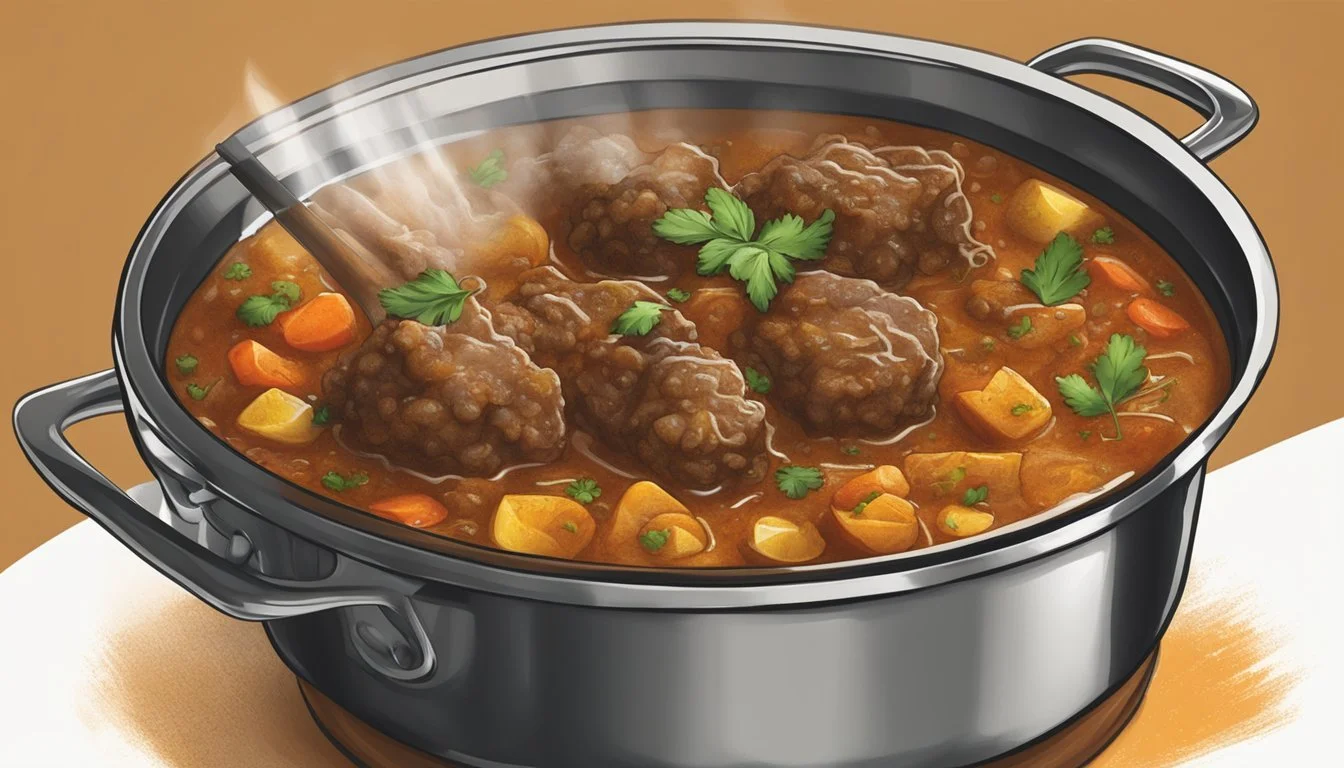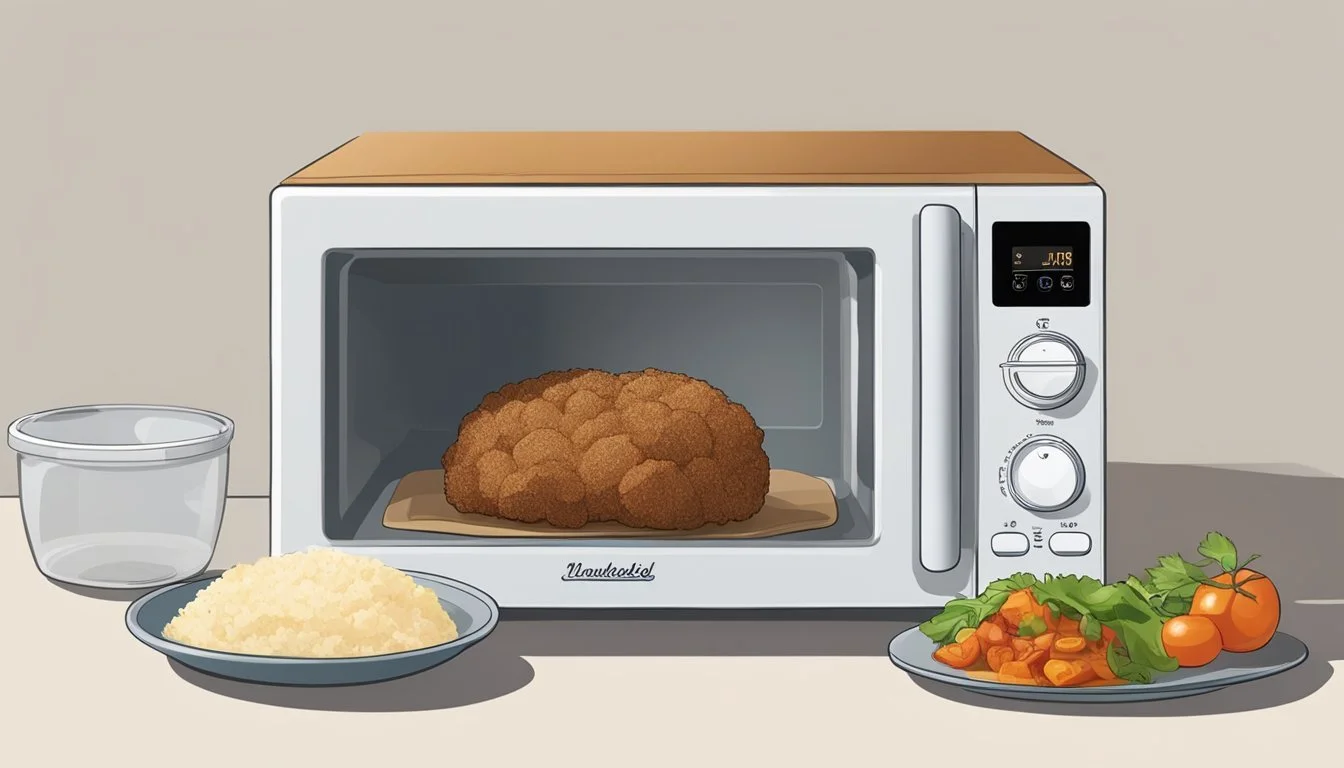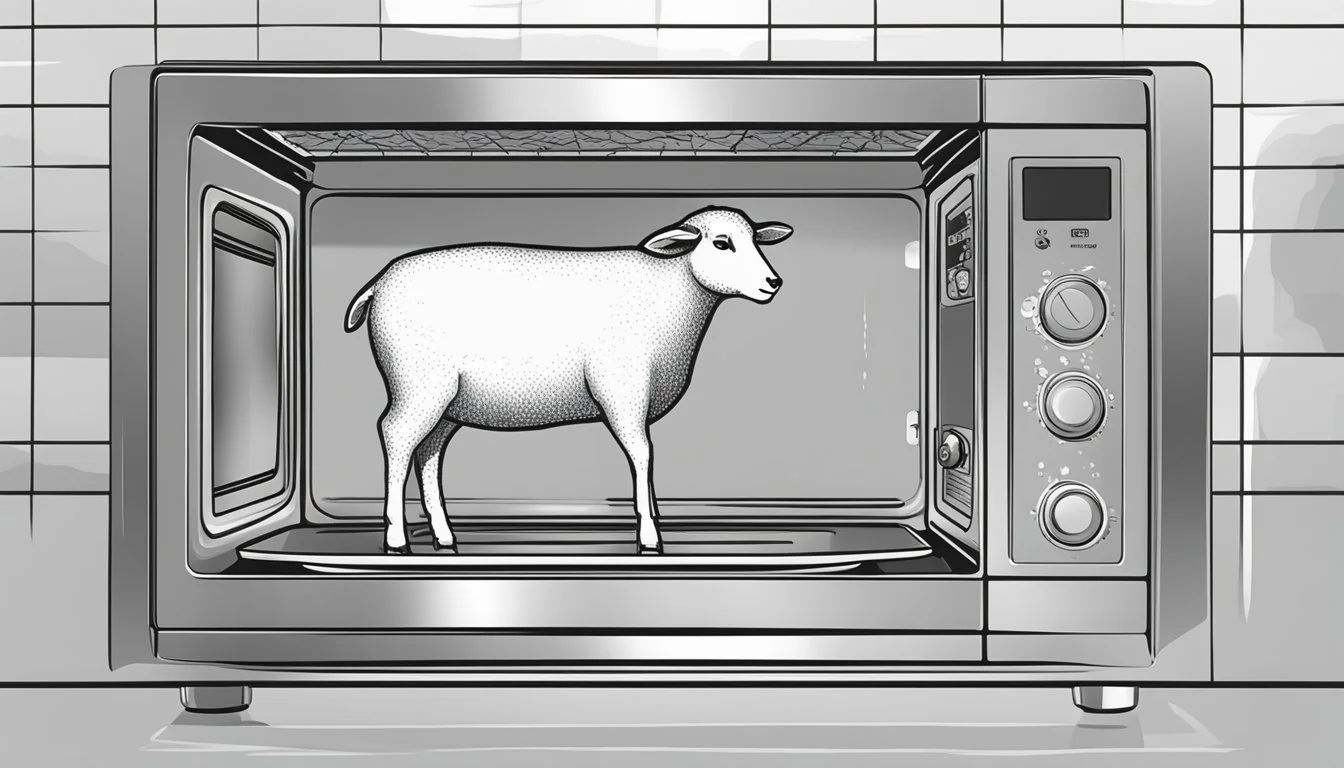Best Way to Reheat Lamb Vindaloo Without Losing Tenderness
Reheating lamb vindaloo while preserving the tenderness of the meat and the robust flavors of the dish can be a culinary challenge. Lamb vindaloo, a popular Indian curry, is known for its spicy, complex sauce and the succulence of the meat. Ensuring that the reheated dish maintains the quality of its initial serving is crucial for an enjoyable experience. When reheating, the goal is to warm the lamb thoroughly without overcooking it, which can lead to a tough and less palatable texture.
The technique applied to reheat lamb vindaloo is pivotal in retaining the meat's tenderness. Unlike simpler dishes, the spicy and acidic nature of the vindaloo sauce can affect how the meat reheats. The ideal approach involves a gentle and slow reheating process that heats the lamb evenly, preventing it from drying out while allowing the flavors to meld. Whether using an oven, stovetop, or microwave, care should be taken to monitor the temperature and timing closely.
To achieve the best results, the reheating method should not only focus on the lamb but also on how the vindaloo sauce comes back to life. Since the sauce forms an integral part of the dish, ensuring that it returns to a properly heated state that accentuates its flavors is as important as the lamb itself. Strategically adding a small amount of water or stock can help to loosen the sauce and facilitate even heating, contributing to a successfully reheated lamb vindaloo that is as flavorful and tender as when it was freshly made.
Understanding Lamb Vindaloo
Lamb Vindaloo is a complex and flavorful dish that hinges on the balance of spices and tender meat. Proper reheating techniques can preserve these essential characteristics.
Anatomy of Lamb Vindaloo
Lamb Vindaloo traditionally consists of lamb marinated in a potent blend of spices, garlic, and vinegar, then cooked with onions, tomatoes, and sometimes potatoes. The vindaloo paste forms the base of the curry, imparting a deep, tangy flavor profile that is both spicy and slightly sweet. The spices often include cumin, peppercorns, and turmeric, which are foundational to its distinctive taste.
Lamb is the protein of choice, favored for its rich taste that stands up to the robust vindaloo sauce. When combined with the acidic components of the marinade, the meat's texture is not only flavored but also tenderized. The overall dish creates a harmonious blend of heat, meatiness, and subtle sweetness.
Importance of Meat Tenderness
In a lamb curry like vindaloo, meat tenderness is critical. It distinguishes a well-prepared vindaloo from an average one. Meat tenderness can be influenced by the initial cooking process, but also by the reheating method. When lamb is overcooked, it loses its juiciness and can become tough, compromising the overall quality of the dish. The goal is to reheat the lamb Vindaloo without further cooking the meat, thus maintaining the tender texture that was achieved during the initial preparation.
Pre-Reheating Preparations
Proper pre-reheating preparations are essential for ensuring that the lamb vindaloo retains its tenderness and flavors. This stage sets the foundation for optimal reheating results by addressing the thawing process and the initial temperature of the meat.
Thawing Leftover Lamb
To prevent any loss in quality, leftovers should be stored in the refrigerator or freezer promptly after the meal. If the lamb vindaloo was frozen, it's crucial to allow it to thaw completely in the refrigerator before reheating. Thawing in the refrigerator can take several hours, depending on the amount of lamb vindaloo, so planning ahead is key.
Steps for thawing lamb vindaloo:
Remove the lamb vindaloo from the freezer.
Place it in the refrigerator.
Allow it to thaw gradually, usually overnight.
Initial Meat Temperature
Bringing the lamb vindaloo to room temperature before reheating can aid in even heat distribution and prevent the meat from drying out. The lamb should sit out of the refrigerator for a short period, generally not exceeding 30 minutes, to gently raise its temperature.
Guidelines for initial meat temperature:
Remove the lamb vindaloo from the refrigerator.
Let it rest, covered, to reach near room temperature (do not leave it out for more than 30 minutes).
Proceed with the chosen reheating method once the meat is slightly tempered.
Reheating Techniques
When reheating lamb vindaloo, one aims to preserve the tenderness of the meat and the robustness of the spices. The reheating process should ensure that the meat does not dry out and that the flavors of the vindaloo sauce remain as vibrant as when it was first cooked.
Oven Method
Using an oven provides even heating and prevents the meat from drying out if done correctly. The oven should be preheated to 350°F (180°C). Place the lamb vindaloo in an oven-safe dish, ideally a casserole, and add a few tablespoons of stock or water to maintain moisture. Cover the dish with foil to lock in moisture and heat for about 20 minutes, stirring halfway through to ensure consistent reheating.
Stovetop Reheating
Reheating on a stovetop offers more control over the process. One could use a Dutch oven or heavy-bottomed pot to steam the vindaloo. Add a small amount of broth or water to the pot and place the vindaloo inside. Cover and warm over a low flame. Stirring occasionally helps to distribute the heat and flavors evenly.
Microwave Reheating
The microwave is a quicker option for reheating. To avoid overheating, reheat in 30-second intervals and check the temperature frequently. Place the lamb vindaloo in a microwave-safe dish, pour a little liquid such as stock or water, and cover with a damp paper towel to keep the moisture in.
Sous Vide Approach
For those who prefer precise temperature control, the sous vide method is an option. Seal the lamb vindaloo in a vacuum-sealed bag with some of its sauce or extra broth. Submerge the bag in water preheated to a temperature just below the serving temperature. Let it heat through for about an hour, ensuring that the meat remains tender and flavorful.
Ensuring Even Heat Distribution
When reheating Lamb Vindaloo, distributing heat evenly throughout the dish is paramount to maintain tenderness of the meat and to ensure that the flavors are well-preserved. Proper techniques involving liquids and coverings are essential to achieve this even heat distribution.
Using Cooking Juices and Liquids
Adding moisture back into Lamb Vindaloo is crucial to prevent the meat from drying out. The cook should reintroduce cooking juices or a small amount of compatible liquid, such as lamb stock or water, to the dish. This can be done by:
Drizzling: Pour a tablespoon or two of liquid over the lamb.
Spooning: Use a spoon to bathe the meat with existing sauce or added gravy.
Care should be taken to maintain a consistent temperature, ideally heated to 165°F, which is the safe internal temperature for leftovers.
Covering Methods
Covering the Lamb Vindaloo while reheating helps to lock in moisture and to promote an oven-like environment for even heat distribution. The following coverings are recommended:
Aluminum Foil: Covering the dish tightly with aluminum foil can reflect heat back onto the food, warming it without losing moisture.
Lid or Oven-Safe Cover: If available, using a lid that is meant for the dish can achieve a similar effect as foil, keeping the steam and heat contained.
Both of these covering methods help to evenly disperse heat, preventing the edges from becoming too hot while the center remains cold. The cook should check the temperature in multiple spots to ensure even heating.
Food Safety and Storage
Ensuring lamb vindaloo's safety and preserving its tender texture requires proper storage and reheating techniques. This section serves as a guide to effectively store and safeguard the dish against bacteria, allowing you to enjoy leftovers without compromise.
Storing and Freezing Tips
In the Refrigerator: Store lamb vindaloo in an airtight container to prevent the entry of moisture and other contaminants. Lamb should be refrigerated within two hours of cooking.
Freezing: For longer preservation, lamb vindaloo can be frozen. Distribute the vindaloo into portion-sized containers or freezer bags before placing it in the deep freeze.
Lamb Vindaloo Storage Summary:
State Container Location Maximum Duration Refrigerated Airtight container Refrigerator 3-4 days Frozen Freezer-safe bags Freezer Up to 3 months
He or she may thaw frozen lamb vindaloo in the refrigerator overnight. They should avoid using a sous vide machine for thawing as typical home equipment might not ensure complete safety against harmful bacteria.
Preventing Bacterial Growth
Temperature Control: It is critical to maintain the food at safe temperatures. The refrigerator should be set below 40°F to inhibit the growth of harmful bacteria.
Heating to Proper Temperature: When reheating lamb vindaloo, ensure it reaches 165°F internally, measured with a food thermometer, to eliminate bacteria.
Don't Leave Food Out: Leftover lamb should not be left at room temperature for more than two hours, or one hour if the ambient temperature is above 90°F.
To summarize, diligent storage in an airtight container, quick refrigeration, and thorough heating are key practices for food safety related to leftover lamb vindaloo.
Enhancing Flavor and Texture
When reheating Lamb Vindaloo, it's essential to not only restore the dish to the appropriate temperature but also to revitalize its rich tapestry of flavors and maintain the tenderness of the meat. Careful addition of spices and precise reheating techniques can make a significant difference in the outcome.
Adding Spices and Aromatics
To reinvigorate the flavor profile of Lamb Vindaloo, chefs may consider bolstering the curry with a modest addition of fresh spices and aromatics. For instance:
Garlic and Ginger: A fresh mince of garlic and ginger can brighten the flavor.
Whole Spices: Lightly toasting a small quantity of cumin, coriander, black pepper, cinnamon, and cloves before adding them can enhance the complexities of the dish.
Turmeric: A pinch of turmeric could not only refresh the color but add a subtle earthiness.
These spices should be sautéed briefly to release their essential oils before being stirred into the Vindaloo as it reheats.
Maintaining Succulence
To ensure the lamb remains succulent during the reheating process, it's crucial to employ techniques that add moisture and regulate heat:
Low and Slow: Gently reheat the Vindaloo in a preheated oven at 325°F, covering it to retain moisture.
Moisture Retention: Adding a splash of water or stock to the Vindaloo can help maintain the succulence of the lamb.
Foil Covering: Sealing the dish with aluminum foil prevents the meat from drying out and helps distribute heat evenly.
The key is to warm the Vindaloo until hot without overcooking, ensuring the lamb remains tender and the flavors meld beautifully.
Utilizing Leftovers Creatively
Leftover lamb, with its rich and complex flavors, offers a multitude of creative possibilities for new meals. From innovative dishes to simple salads and sandwiches, the tender meat adds a gourmet touch to an array of recipes.
Creating New Dishes
Lamb vindaloo hails from the Goan region and features a tangy, spicy sauce that works remarkably well in fusion cuisine. Cooks can fashion a new dish by shredding the leftover lamb and using it as a robust protein in a nourishing curry bowl, pairing it with rice or quinoa and an assortment of vegetables. For a comforting meal, they might fold the lamb into a fluffy omelette or savory crepe, complementing the vindaloo sauce with a sprinkle of cheese to balance the flavors.
Incorporating into Salads and Sandwiches
Leftover lamb lends itself perfectly to refreshing salads or hearty sandwiches. Its tenderness and full-bodied taste elevate simple greens or grains to create satisfying meals.
Salads: One can dice the lamb and toss it with mixed greens, cherry tomatoes, and a vinaigrette for a Mediterranean-inspired salad. Alternatively, it can be mixed with couscous (What wine goes well with couscous?) or bulgur, fresh herbs, and a lemon dressing to prepare a vibrant lamb grain salad.
Sandwiches: Sliced leftover lamb can be the star ingredient of a gourmet sandwich. Layered between slices of crusty bread or stuffed in warm pita bread, the lamb pairs well with tzatziki sauce, hummus, or a mint-yogurt spread. These sandwiches offer a delightful way to enjoy the hearty flavors of vindaloo in a casual, hand-held format.
Tools and Equipment
When reheating Lamb Vindaloo to maintain tenderness, having the right tools and equipment is essential.
Oven: A reliable oven is the primary tool needed. It provides an even heat distribution that's perfect for reheating casseroles (What wine goes well with casseroles?) while preserving moisture.
Microwave: For a quicker method, the microwave is an alternative. Although it's less ideal for even heating, a damp paper towel placed over the dish can aid in retaining moisture.
Air Fryer: Not typically recommended for dishes like Vindaloo, as it can dry out the sauce and meat.
Sous Vide Machine: A sous vide machine gently reheats the lamb in a water bath, ensuring it does not overcook and stays tender. This method requires a significant amount of time and a vacuum-sealed bag.
Stove: Using a stove with a heavy-bottomed pan can be a method for smaller portions, but requires attention to prevent burning.
Casserole Dish: Necessary for oven reheating. It should have a lid or be coverable with aluminum foil.
Meat Thermometer: Important for checking the internal temperature to ensure food safety without overcooking. The lamb should reach 145°F (63°C).
Damp Paper Towel: Key for microwave reheating—it helps to retain moisture.
Below is a summary reference table:
Equipment Purpose Notes Oven Even heat distribution Preferred for casseroles Microwave Quick reheating Use with damp paper towel to retain moisture Air Fryer Not recommended Could dry out the dish Sous Vide Machine Precise, low-temperature reheating Time-consuming; requires vacuum-sealed bag Stove Direct heat for smaller portions Requires attention to prevent burning Casserole Dish Oven reheating Should be covered Meat Thermometer Ensuring proper internal temperature Essential for safety and tenderness Damp Paper Towel Microwave moisture retention Used to cover the lamb while reheating
Each tool contributes to the goal of achieving a well-reheated dish that is as close to the original in flavor and tenderness.
Final Tips for Perfect Reheating
To ensure tenderness and flavor in reheated Lamb Vindaloo, monitoring temperature and understanding the right doneness are crucial. These methods not only preserve the delicate texture of the lamb but prevent overcooking, which can lead to dryness.
Monitoring Internal Temperature
Using a meat thermometer is essential for checking the internal temperature of reheated Lamb Vindaloo. Insert the thermometer probe into the thickest part of the meat, avoiding any bones for the most accurate reading. Lamb should reach a safe minimum internal temperature of 145°F (63°C), which is considered medium-rare. This temperature ensures the meat is warmed through while retaining moisture and tenderness.
Reheating to Desired Doneness
For those who prefer their lamb to be less pink, aiming for a medium doneness might require heating the meat until it reaches an internal temperature of approximately 160°F (71°C). Conversely, if one enjoys well-done meat, the internal temperature should be around 170°F (77°C). However, be cautious not to exceed these temperatures, as the higher the heat, the more likely the lamb will become tough and lose the juiciness essential to Lamb Vindaloo's rich flavor.








